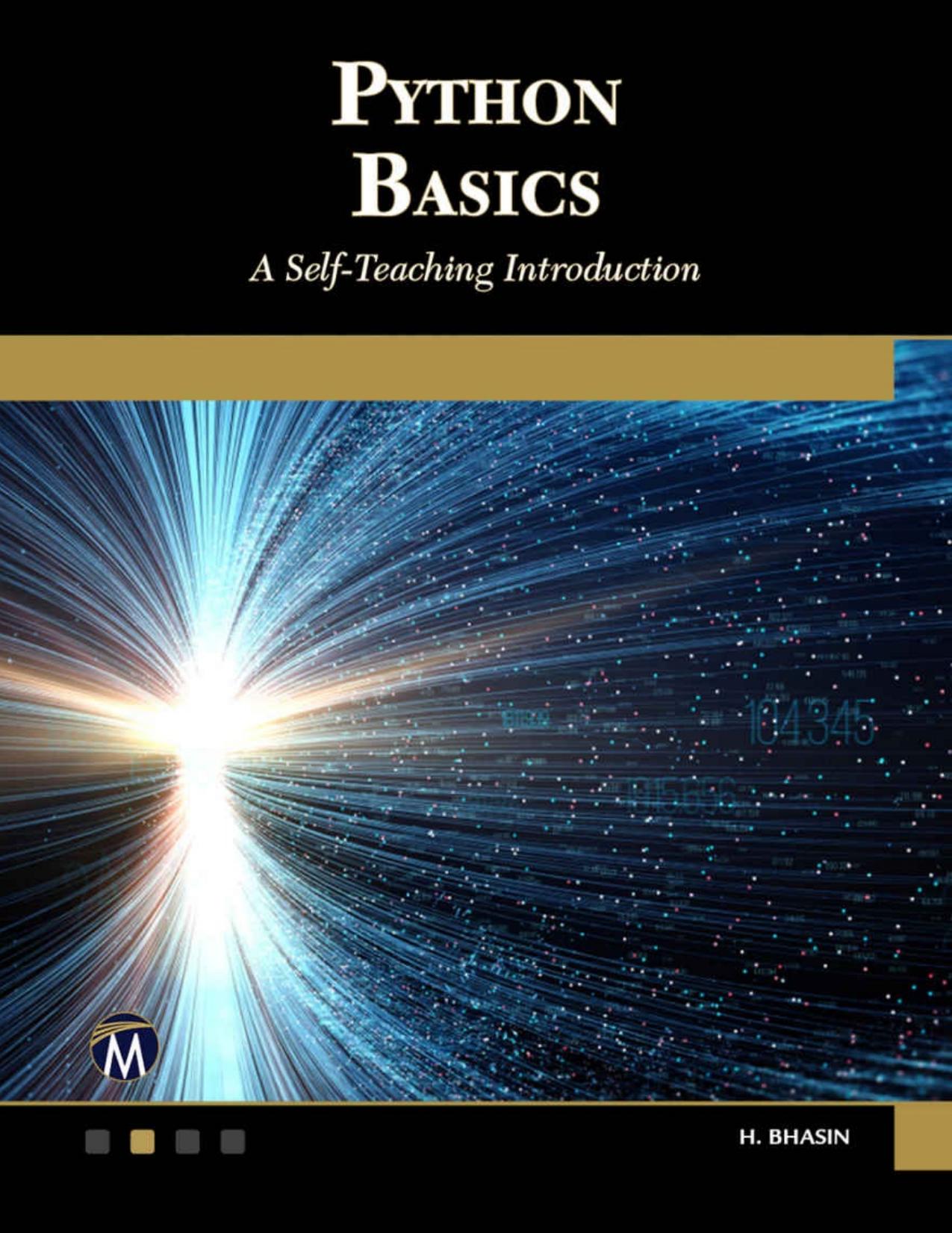Python Basics: A Self-Teaching Introduction by H. Bhasin

Author:H. Bhasin [Bhasin, H.]
Language: eng
Format: azw3, epub, pdf
Publisher: Mercury Learning and Information
Published: 2018-12-04T16:00:00+00:00
12.2_INIT_ REVISITED
The _init_ function has already been explained in Chapter 10 of this book. The function initializes the members of a class. Those of you from a C++ or Java background will find it hard to ignore the similarity between the constructors (which have the same name as that of the class in C++, etc.) and the _init_ function. Earlier it was stated that _init_ cannot be overloaded, which is partly true. Though one cannot have two _init_ functions in the same class, there is a way to implement constructor overloading as explained in the following discussion.
As stated earlier the purpose of _init_ is to initialize the members of the class. In the following example (Illustration 12.1), a class called complex has two members: real and imaginary, which are initialized by the parameters of the _init_ function. Note that the members of the class are denoted by self.real and self.imaginary and the parameters of the functions are initialized by real and imaginary. The example has a function called putData to display the values of the members. In the _main_() function, c1 is an instance of the class complex. The object c1 is initialized by 5 and 3 and the putData() of the class has been invoked to display the 'Complex Number'.
Illustration 12.1: Create a class called complex, having two members - real and imaginary. The class should have _init_, which takes two parameters to initialize the values of real and imaginary respectively and a function called putData to display the complex number. Create an instance of the complex number in the _main_() function, initialize it by (5, 3) and display the number by invoking the putData function.
Download
Python Basics: A Self-Teaching Introduction by H. Bhasin.epub
Python Basics: A Self-Teaching Introduction by H. Bhasin.pdf
This site does not store any files on its server. We only index and link to content provided by other sites. Please contact the content providers to delete copyright contents if any and email us, we'll remove relevant links or contents immediately.
Deep Learning with Python by François Chollet(12881)
A Developer's Guide to Building Resilient Cloud Applications with Azure by Hamida Rebai Trabelsi(10210)
Hello! Python by Anthony Briggs(10131)
The Mikado Method by Ola Ellnestam Daniel Brolund(10020)
OCA Java SE 8 Programmer I Certification Guide by Mala Gupta(9988)
Dependency Injection in .NET by Mark Seemann(9524)
Hit Refresh by Satya Nadella(9001)
Algorithms of the Intelligent Web by Haralambos Marmanis;Dmitry Babenko(8532)
The Kubernetes Operator Framework Book by Michael Dame(8273)
Exploring Deepfakes by Bryan Lyon and Matt Tora(8061)
Practical Computer Architecture with Python and ARM by Alan Clements(8007)
Implementing Enterprise Observability for Success by Manisha Agrawal and Karun Krishnannair(7986)
Robo-Advisor with Python by Aki Ranin(7980)
Sass and Compass in Action by Wynn Netherland Nathan Weizenbaum Chris Eppstein Brandon Mathis(7921)
Grails in Action by Glen Smith Peter Ledbrook(7891)
Building Low Latency Applications with C++ by Sourav Ghosh(7870)
Svelte with Test-Driven Development by Daniel Irvine(7863)
Test-Driven iOS Development with Swift 4 by Dominik Hauser(7858)
Becoming a Dynamics 365 Finance and Supply Chain Solution Architect by Brent Dawson(7780)
